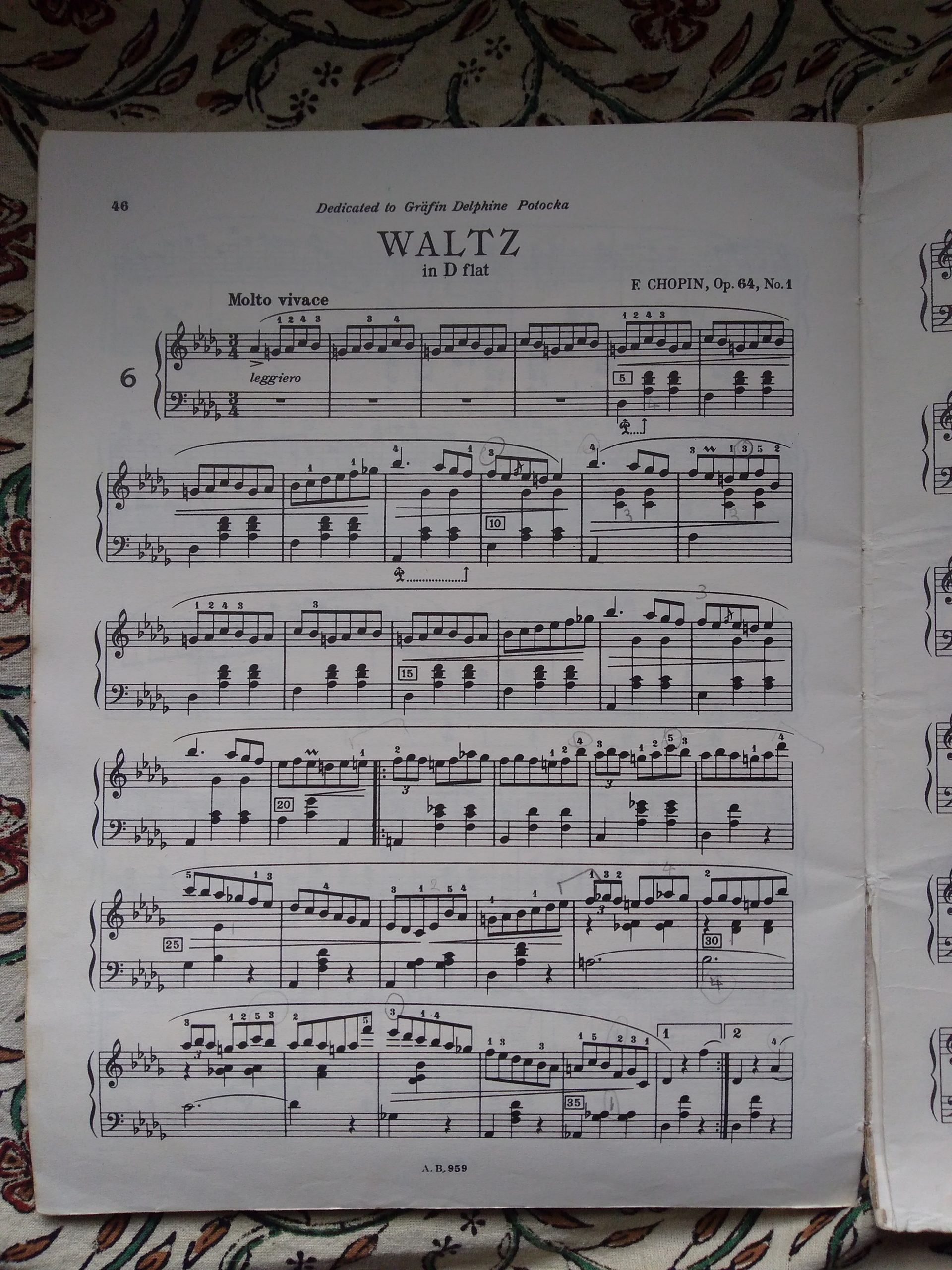 If you google the ‘Minute’ Waltz, you’ll find that it is a ‘song by Arthur Rubinstein’, which would have come as a surprise to Frédéric Chopin.
If you google the ‘Minute’ Waltz, you’ll find that it is a ‘song by Arthur Rubinstein’, which would have come as a surprise to Frédéric Chopin.
In the UK the waltz (in D flat, opus 64 no 1) is famous because it’s the signature tune of the long-running BBC radio show ‘Just a Minute’, a panel game in which players have to speak for one minute on a given subject without hesitation, repetition or deviation. This has cemented in many people’s minds the idea that Chopin’s waltz is supposed to last just a minute.
Allegedly, the nickname ‘minute’ – which was not Chopin’s idea – was actually intended to convey the idea of ‘small’ rather than ‘lasting for 60 seconds’, but I’ve not been able to track that down for sure. The notion doesn’t ring quite true to me. I’ve read that the piece was inspired by watching a little dog chasing its own tail. In France, it is known as ‘Valse du petit chien’, which rings truer. It was the last piece on the recital programme which the increasingly fragile Chopin played to a packed house in Paris in 1848, after an absence of six years from the platform.
The waltz is delicately constructed in A-B-A form. It begins in the right hand alone with a theme circling around a few notes in ‘tail-chasing’ fashion. When the left hand joins in with the waltz rhythm, there’s a sweet friction between the implied two-time (four quavers circling round and round) of the right hand and the three-beat rhythm of the left. After a few bars, this friction produces an energy which sends the right hand flying up to the top of the phrase before it settles back again.
In the left hand, the waltz rhythm is varied just enough to keep it from becoming predictable. Mostly the left hand chords are light and dry, but at just one place (shortly before the end of the opening section) Chopin writes a sustained four-bar rising line in long notes in the bass. In the midst of so much gentle tapping out of beats, this smooth four-bar line is like a broad brushtroke of paint in a line drawing.
The middle section, or ‘B’ section, is calmer, in a lilting mood. Although the theme in the right hand is simple in outline, Chopin varies it with remarkable skill, introducing new harmonies under the same theme each time it reappears. He keeps up the sense of duple against triple time with the most discreet of cross-rhythms. The middle section sweeps by as if in a single breath.
When I was a child, my piano teacher one day gave me the music of the ‘Minute’ waltz and asked me to come back next week and say what I thought of its nickname. This was before the days of the internet, remember, and we had no recordings of it, so I had no way of gathering information other than by playing it. The next week I reported back that it sounded horrible if played in one minute, but delightful if I was allowed to take about a minute and forty-five seconds. My piano teacher was mightily pleased with me and said that such-and-such a famous pianist (can’t remember who – possibly Rubinstein) had said exactly the same.
I still remember how proud I was of having reached on my own a conclusion that a famous pianist had reached too.




What a lovely memory to have!
I can’t tell you how much I enjoy all of your posts.
Thank you!
Nona, thank you! It’s more fun to write if you know people are listening.